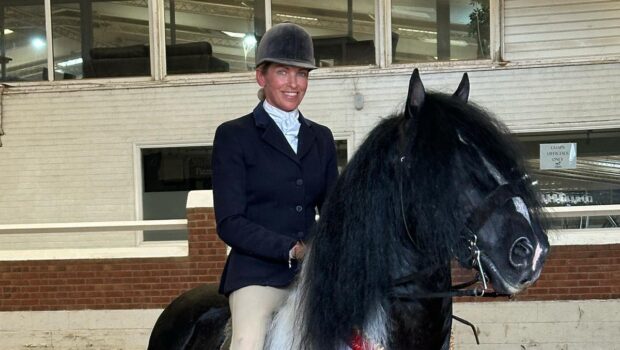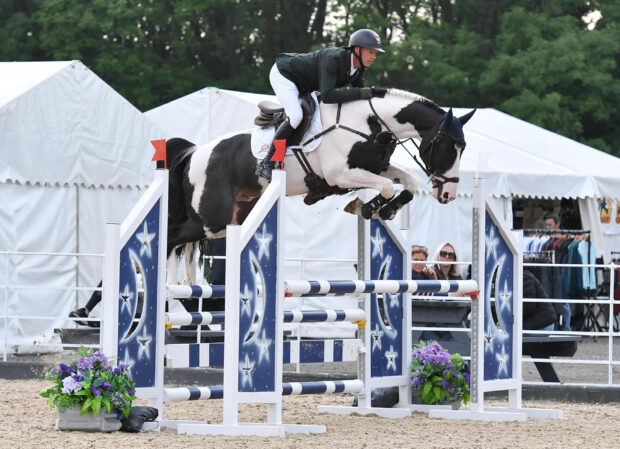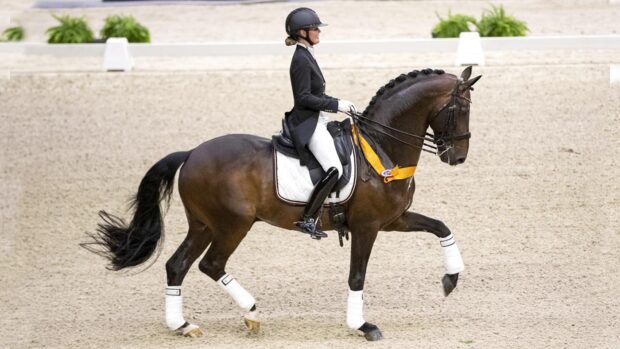From temperament to conformation, Cyden Stallions’ owner Lara Dyson explains what to look for in a stallion
If you are looking for a stallion to sire a foal, how can you determine that the stallion you choose has got the desired x-factor to produce a foal that is right for you and fit for the role it is intended?
Breeding can be an expensive business so ensuring that all the pieces of the jigsaw are in place, can take time and require plenty of research to get the foal of your dreams.
Lara Edwards, dressage rider and owner of Lara Edwards Stallions, explains what she looks for in a stallion:
1. Temperament
As the old saying goes, ‘you ask a mare, tell a gelding and put it to a stallion for his consideration’, so when it comes to looking for a stallion to breed from, temperament is crucial. It is no good having a stallion that has the best conformation possible and a pedigree to die for if his temperament makes him difficult to handle.
“A good temperament is one of the most important things I look for in a stallion — good looks alone are simply not enough. A horse that is calm and co-operative by nature will be far easier to manage,” says Lara.
“My stallions are required to live side by side with other mares and geldings, as well as my nieces and nephews’ ponies, so their good nature is vital for harmony on my yard.”
While attitude and personality will add to his stallion status, these characteristics need to be manageable.
As your chosen stallion will make up half of the genetic makeup of your foal, a good temperament is vital as this is an important characteristic that will be passed on.
2. Conformation
When looking for the perfect dressage stallion, good conformation is vital to achieving movements and paces that score high percentages.
Perfection is something that is practically impossible but knowing what to look for can make life much easier for both the trainer, who is responsible for the horse’s education and for the horse, who has to be physically capable of performing what he is asked to do.
“Horses with good conformation are more likely to find it easier to perform the movements expected in dressage and are less likely to suffer from soundness issues, which can be both frustrating and career limiting for a talented horse,” says Lara.
3. Trainability
You can have the most talented horse in the world with the most beautiful paces, however, if he has a bad temperament he will be difficult to train, whereas a less talented horse that has a wonderful willing temperament will try his best for you.
The horse with less natural talent but a great temperament is likely to be more successful as he will be more trainable, this is particularly important during his early years of education.
“Dressage is as challenging mentally as it is physically and some horses don’t have the mental strength to learn when the training becomes more difficult, while others will thrive on the challenge,” explains Lara.
4. Bloodlines
Is the stallion graded and if so, with whom is he graded? Has the stallion you’ve chosen got good breeding on both sides? Is this the type of horse you are looking to breed yourself?
“For me the KWPN breed represents the tough grading and testing that the stallion has had to go through in order to gain the KWPN status,” says Lara. “Stallions can be graded with different organisations — some in as little as two hours, however for me the 30-day or 90-day test that’s required as a KWPN-approved stallion represents they have been thoroughly examined and are fit to be a breeding stallion.”
Continued below…
Like this? You might also enjoy reading these:
7 things you always wanted to know about breeding, but were too embarrassed to ask
Subscribe to Horse & Hound magazine today – and enjoy unlimited website access all year round
5. Current offspring
The best indicator of a good stallion isn’t what he does, but what his offspring do, so by looking at the current offspring of an established stallion you can get a good idea of the type he is likely to throw. Results speak for themselves.
Visit: www.cydendressage.com



